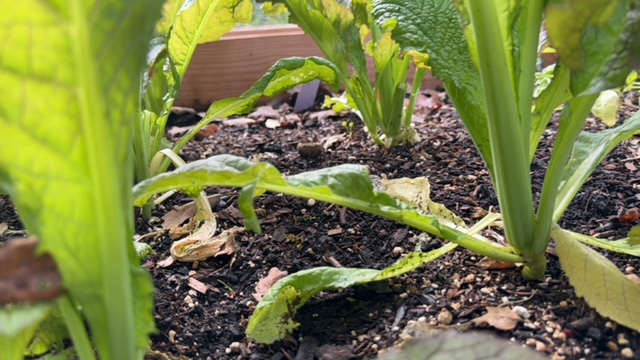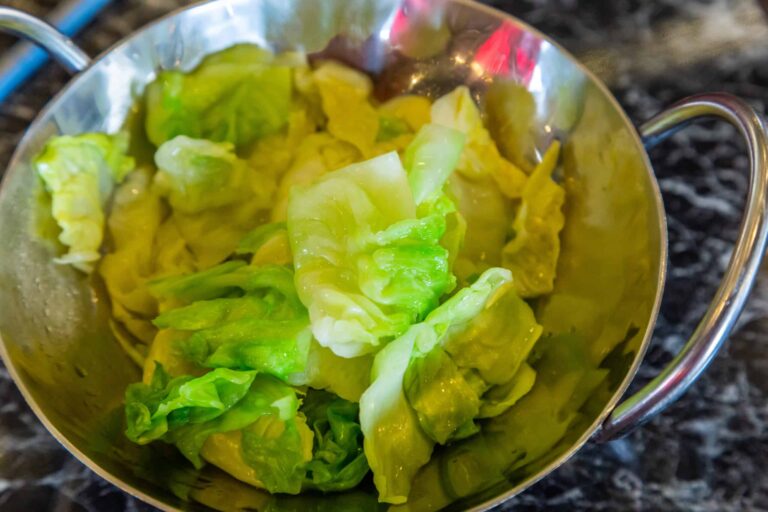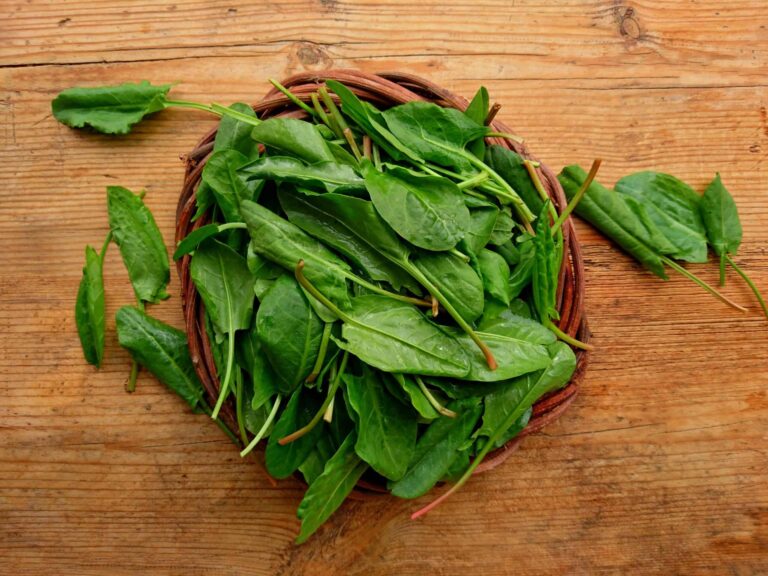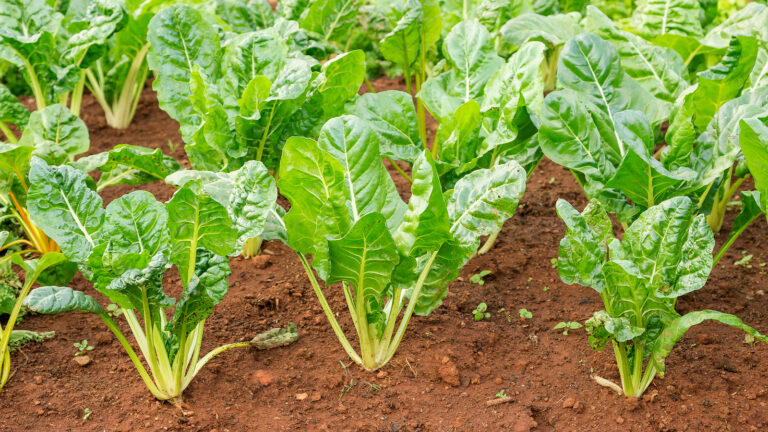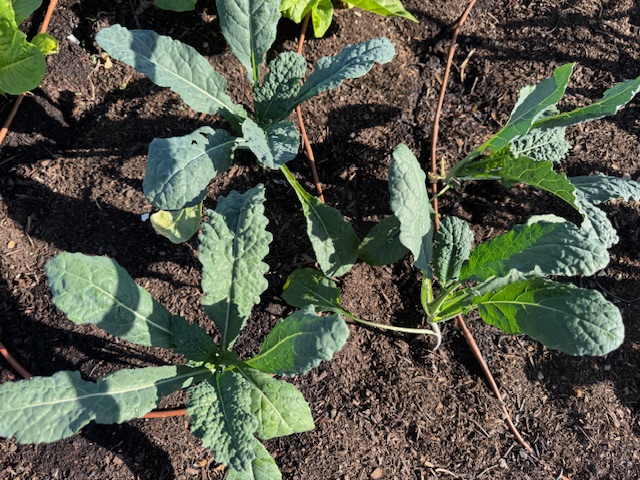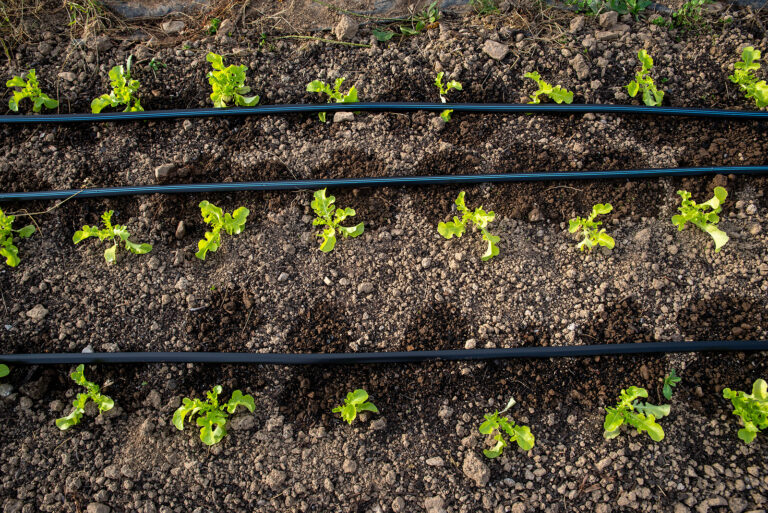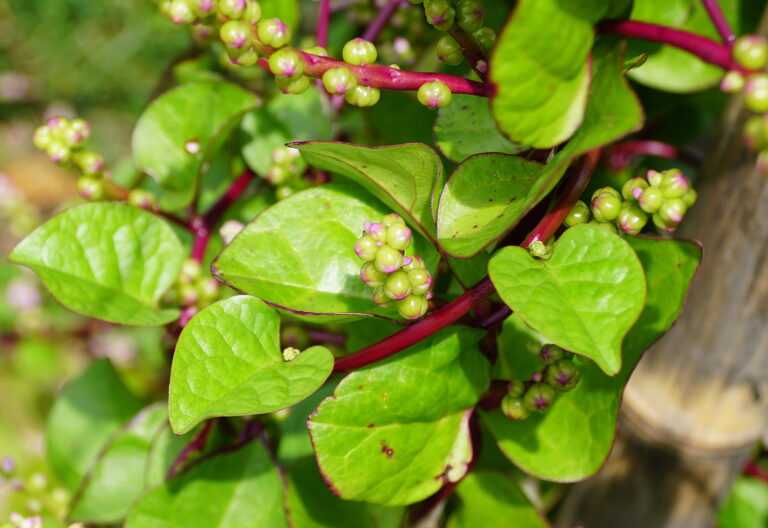Common Mustard Green Pests and Diseases and How to Control Them Naturally
I’ve been growing mustard greens for years in my raised beds here in Sonoma Valley, and one lesson I’ve learned is that healthy plants are less likely to suffer from pests and diseases. Still, mustard greens—like other leafy brassicas—have their share of common troubles. Here’s what I’ve seen most often in my garden and the natural controls that work best.
Common Mustard Green Pests
1. Aphids
- Signs: Small green, black, or gray insects clustered on the undersides of leaves, causing curling or yellowing.
- Control: Wash them off with a firm spray of water. Introduce ladybugs or lacewings. Neem oil can also help.
2. Flea Beetles
- Signs: Tiny round holes in leaves, especially seedlings. Plants look “peppered” with damage.
- Control: Use floating row covers early in the season. Apply diatomaceous earth around plants. Keep soil moist to discourage beetles.
3. Cabbage Loopers and Worms
- Signs: Ragged leaf holes, droppings on leaves, and green caterpillars hiding underneath.
- Control: Handpick worms. Spray with Bacillus thuringiensis (Bt), a natural bacteria safe for edible greens. Encourage birds in the garden.
4. Harlequin Bugs
- Signs: Bright orange-and-black shield-shaped bugs sucking sap, leading to yellow and wilted leaves.
- Control: Handpick and drop them in soapy water. Plant trap crops like radishes to lure them away.
Common Mustard Green Diseases
1. Downy Mildew
- Signs: Yellow spots on leaves with fuzzy gray or white growth underneath.
- Control: Water at the base, not overhead. Space plants for airflow. Remove infected leaves promptly.
2. Black Rot
- Signs: V-shaped yellow lesions starting at leaf edges. Often caused by infected seed or wet conditions.
- Control: Use disease-free seed. Rotate crops yearly. Remove and destroy infected plants.
3. Clubroot
- Signs: Stunted, wilted plants with swollen, distorted roots.
- Control: Rotate crops for at least 4 years. Keep soil pH near 7.2 with lime—clubroot thrives in acidic soil.
My Experience
In my experience, the most effective “treatment” is prevention—healthy soil, crop rotation, and choosing resistant varieties. I’ve found that when I keep the soil rich with compost and mulch to maintain even moisture, mustard greens bounce back quickly even when flea beetles or aphids show up. By relying on natural controls, I not only keep my greens chemical-free but also support beneficial insects that help the whole garden thrive.
Mustard Green Pests and Diseases Quick Reference Chart
| Problem | Symptoms | Natural Controls |
|---|---|---|
| Aphids | Clusters of green/black insects; curled, yellow leaves | Spray with water, neem oil, release ladybugs |
| Flea Beetles | Tiny round holes in leaves, heavy seedling damage | Floating row covers, diatomaceous earth, keep soil moist |
| Cabbage Loopers/Worms | Ragged holes, droppings, green caterpillars on leaves | Handpick, spray Bt, encourage birds |
| Harlequin Bugs | Orange-and-black bugs; yellow, wilted leaves | Handpick into soapy water, trap crops like radishes |
| Downy Mildew | Yellow spots, fuzzy gray/white underside growth | Water at soil level, space plants, remove infected leaves |
| Black Rot | V-shaped yellow lesions at leaf edges | Use clean seed, rotate crops, remove infected plants |
| Clubroot | Stunted, wilted plants; swollen roots | Rotate crops 4+ years, lime soil to raise pH |
Preventing Pests and Diseases in Mustard Greens
- Start with healthy soil: Add compost or aged manure to boost plant health and natural resistance.
- Rotate crops: Avoid planting mustard or other brassicas (cabbage, kale, broccoli) in the same bed year after year.
- Choose resistant varieties: Select mustard green varieties bred for disease resistance when available.
- Use clean seed and transplants: Prevents bringing in hidden diseases like black rot.
- Space plants properly: Good airflow reduces fungal and bacterial problems.
- Water wisely: Water at soil level to keep leaves dry and discourage mildew.
- Mulch the soil: Mulch helps maintain even moisture and reduces soil splash that spreads disease.
- Encourage beneficial insects: Ladybugs, lacewings, and birds help control pests naturally.
- Keep the garden clean: Remove plant debris and infected leaves quickly to stop pests and diseases from spreading.
- Monitor regularly: Catching problems early makes natural control more effective.
Mustard Growing Hub
Start here: The Ultimate Mustard Growing Guide: From Seed to Harvest
Varieties & Types
- Best Mustard Green Varieties to Grow in Your Garden
- Plain Leaf vs. Curled Leaf Mustard Greens: What’s the Difference?
- Oriental Mustard Cabbage Explained: Green Stalk vs. White Stalk Varieties
- Flavor Profiles of Different Mustard Green Varieties
Planting & Growing
- When to Plant Mustard Greens by USDA Zone
- Mustard Greens Planting Calendar (Month-by-Month Guide)
- The Best Places to Plant Mustard Greens for Healthy Growth
- Proper Spacing for Mustard Greens: Garden and Container Tips
- Mustard Greens Companion Plants for Pest Control and Better Yields
- How to Grow Mustard Greens in Containers Step by Step
Care & Maintenance
- How to Water Mustard Greens for Tender Leaves
- Feeding Mustard Greens: Fertilizer Tips for Fast Growth
- Common Mustard Green Pests and Diseases and How to Control Them Naturally
- Easy Mustard Greens Care Guide for Beginners
Harvest & Serving

